Urban Land Institute selects ten developments for 2023 ULI Americas Awards for Excellence
By Josh Niland|
Tuesday, Aug 29, 2023
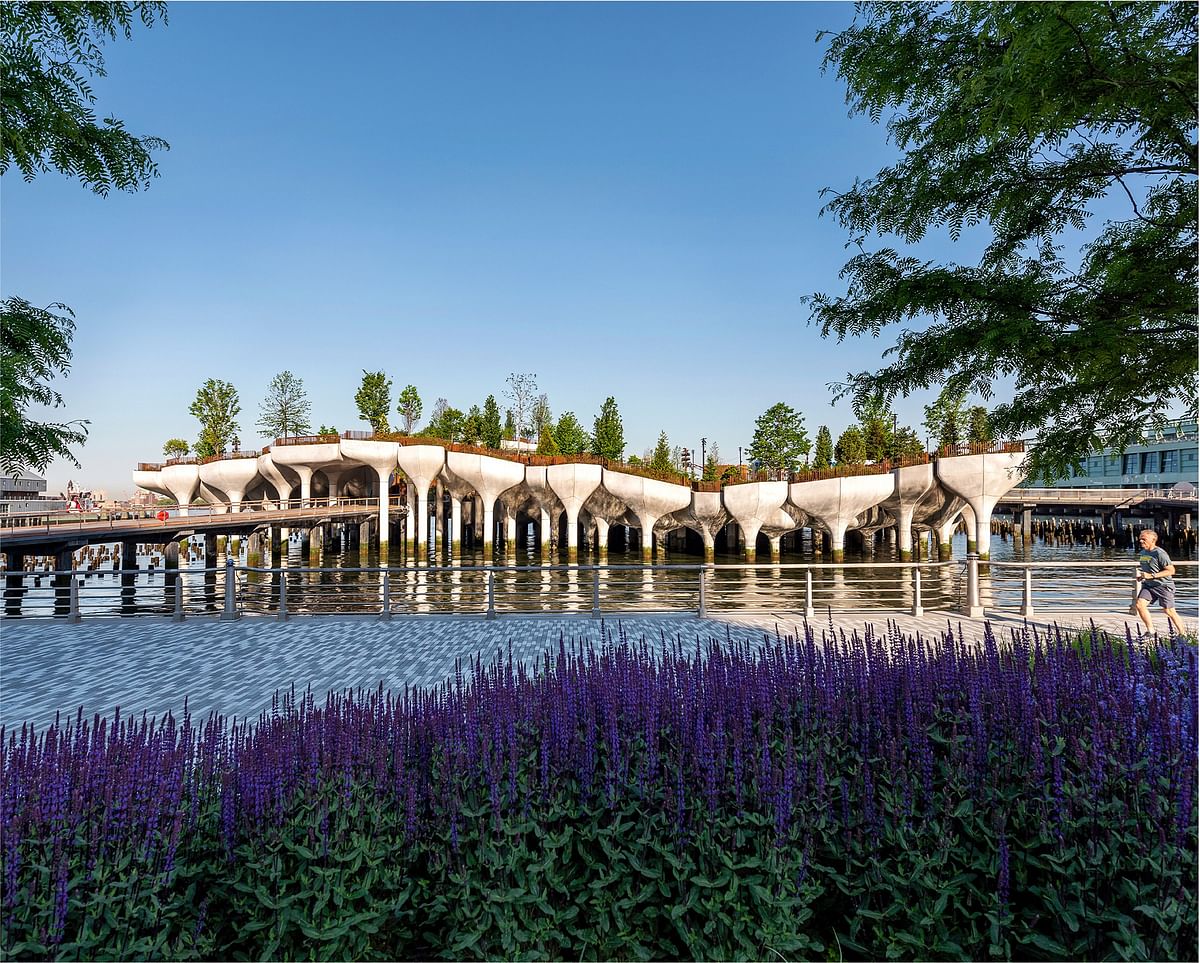
Related
The Urban Land Institute (ULI) has selected ten recent standout developments from around North America as the recipients of its 2023 ULI Americas Awards for Excellence.
Each project is said to embody the best practices in land use and development and will go up against regional winners from Europe and Asia Pacific for overall top honors at the 2023 ULI Global Awards for Excellence.
“The program evaluates submissions on overall excellence, including achievements in marketplace acceptance, design, planning, technology, amenities, economic impact, management, community engagement, innovation, and sustainability, among others,” the ULI shares.
A total of 68 projects were submitted to form a 20-finalist shortlist, which was judged by a 13-member panel of experts who also awarded select projects with distinction in the Low-Carbon Development, Small-Scale Development, and Urban Open Space categories.
“This year’s ULI Americas Awards for Excellence winners represent a diverse group of projects that share in common a responsiveness to the needs in our communities,” the jury chair and Gensler principal Ben Tranel said. “Our built environment reflects our values and priorities, and the final award winners demonstrate innovation and excellence in the criteria established for the award.”
Following are the winning developments:
Water Street Tampa in Tampa, FL, planned by Elkus Manfredi and Reed Hilderbrand; designed by Kohn Pedersen Fox; COOKFOX; ASD SKY; Nichols; Morris Adjmi; ODP Architects; Baker Barrios
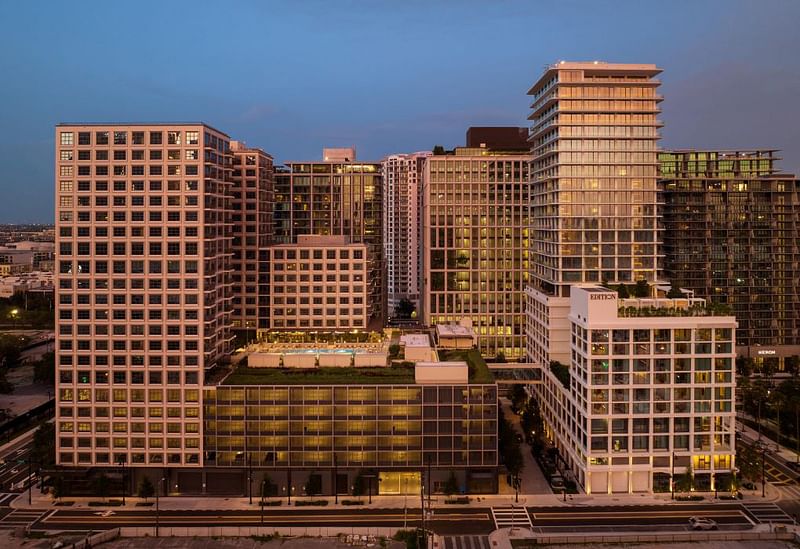
ULI description: "SPP’s vision for a much-needed revitalization of Downtown Tampa has come
to reality with Water Street Tampa’s transformation of former surface
parking lots into a full-fledged neighborhood that is connecting
communities, improving walkability, and introducing a '15-minute city' experience. SPP commenced vertical construction in 2018 and completed
its first phase of development in fall 2022 with the opening of The
Tampa EDITION."
Low-Carbon Development Recognition: University of California Merced, Master Architect 2020 in Merced, CA, designed by Skidmore, Owings & Merrill; WRNS Studio; HOK; Page Southerland Page; Mahlum Architects; Arup
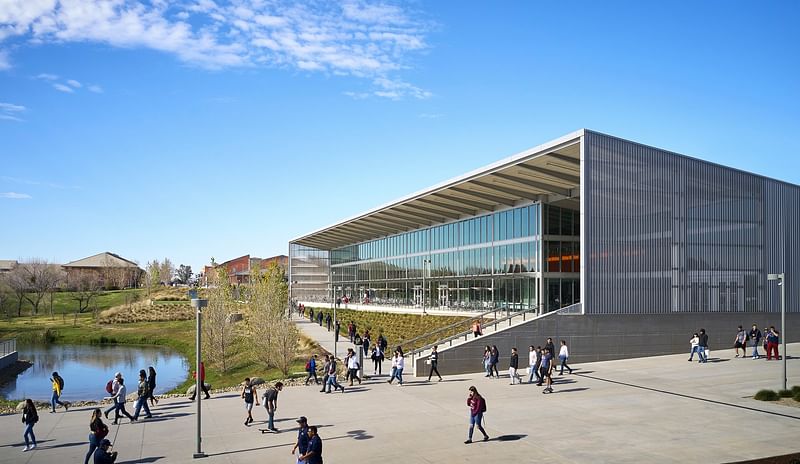
ULI description: "Through a fully integrated, collaborative design process, the 2020 Project incorporated private sector innovation and efficiencies with design, management, financing, and implementation—necessary to achieve the University’s ambitious development schedule while maintaining flexibility within the plan to accommodate future needs. This delivery method deferred initial costs while simultaneously increasing student enrollment. Initiated as a 2015 competition among multifaceted development teams, the 2020 Project was delivered in three phases."
Urban Open Space Development Recognition: Little Island in New York, NY, designed by Thomas Heatherwick Studio; MNLA
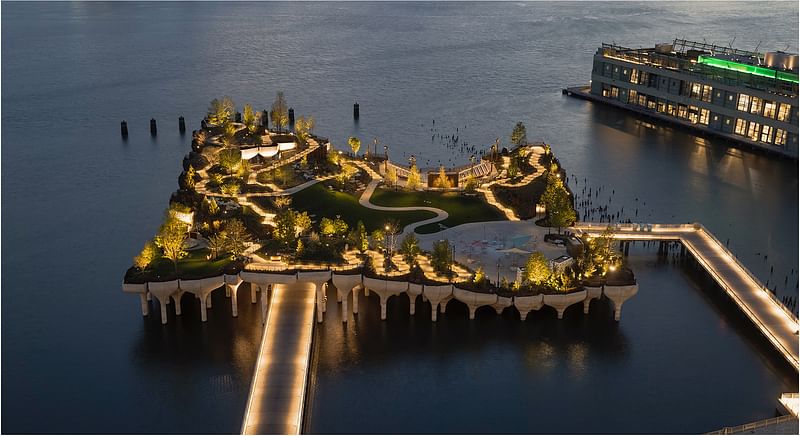
ULI description: "Little Island was designed with winding pathways that give you new views each way you turn. These pathways guide you to our three distinctive overlooks and performance spaces as well as immerse you in our 35 species of trees, 65 species of shrubs, and 290 varieties of grasses, vines, and perennials. Throughout the park, you will also notice weathering steel sheet piling selected for the retaining walls to continue the warm materials palette used throughout the pier and their crenelated form creates opportunities to tuck in vines and make spaces for cascading shrubs and perennials. The Southeast Overlook is our highest spot in the park with views of downtown Manhattan. The Northwest overlook features views of The Amph and the Hudson River. The Southwest overlook features views of the West Side Highway and the old Cunard Arch."
Low-Carbon Development Recognition: King Open/Cambridge Street Upper Schools & Community Complex in Cambridge, MA, designed by William Rawn Associates, Architects, Inc. in association with Arrowstreet Inc.

ULI description: "The King Open/Cambridge Street Upper Schools & Community Complex is more than just a school, it’s a testament to community engagement and a celebration of the site’s history. As part of the City of Cambridge’s Innovation Agenda for Cambridge Public Schools, the King Open Complex is the second project in the City’s larger effort to transform K-8 education with 21st century learning spaces. The King Open Complex reconnects the community to the park by surrounding the building with green, open spaces and creates a central spine that links the City through the site to Donnelly Field."
Ironworks in Vancouver, BC, designed by Taylor Kurtz Architecture + Design

ULI description: "Ironworks is Canada’s first stacked mixed-use commercial industrial
project. The overall form consists of two primary buildings, running
parallel to Pandora street to the north and Franklin street to the
south. The buildings consist of 140,000 SF of light-industrial space,
70,000 SF of office space, and 100,000 SF of secure underground parking.
The southern (Franklin) building consists of two stacked double-height
storeys of flexible light-industrial space. The northern (Pandora)
building consists of one double-height storey of flexible
light-industrial space below two storeys of office/flex. Ironworks also
includes a large potential 3,983 SF restaurant unit on the main level
including a 1,200 SF patio."
Small-Scale Development Recognition: HomeRise at Mision Bay in San Francisco, CA, designed by Leddy Maytum Stacy Architects; Lowney Architects; YA Studios; TS Studios
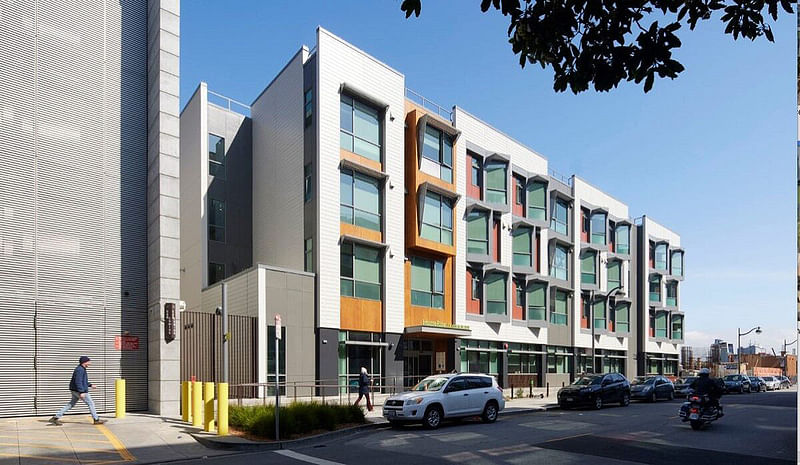
ULI description: "This development provided both a much-needed addition to the City’s permanent supportive housing stock and also furthered the City’s joint goals of stimulating new job creation and investment in resilient infrastructure. The Project is administered by OCII, the successor to the SFRA, and is located in the Mission Bay South Project Area, which consists of 303 acres and is planned to include up to 6,514 residential units, as well as retail, commercial, and public open space. Mission Bay Block 9 is the only 100% permanent supportive housing project in the Mission Bay South Redevelopment Plan area."
First Americans Museum in Oklahoma City, OK, designed by Johnson Fain
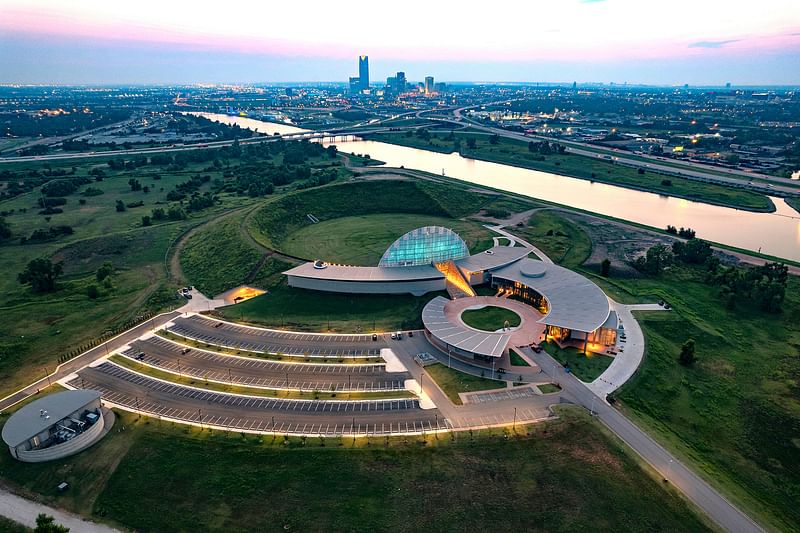
ULI description: "The master planning concept includes mound building as used by many Oklahoma tribes who located their settlements near rivers as a method of elevating land above dangerous flood levels. The symbolism of a circular spiral mound central to the design concept was employed to represent the Indian’s 'procession of life' from a 'garden of origins' to a ninety-foot-high promontory overlooking the river with views towards downtown Oklahoma City in the distance and the heavens above. Along the promontory walk, there are three 'Sky Terraces' for storytelling, repose, and contemplation. The 175,000-square-foot First Americans Museum is a building of the earth integrated into the large rising spiral mound at the heart of the site. A tall prismatic glass 'Hall of The People' is the meeting place for the many tribes making up Oklahoma’s rich Native American heritage and the starting place for the visitor to begin the journey through the multi-layered story of Native American culture and history."
Cambridge Crossing in Cambridge, MA, designed by CBT Architects; Ken Greenberg; Michael Van Valkenburgh Associates, Inc.
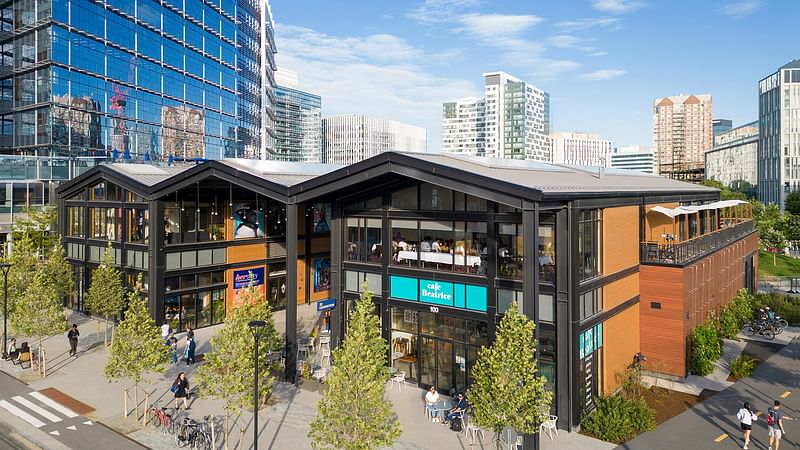
ULI description: "The site was formerly an abandoned railyard now transformed into a neighborhood designed for human interaction and health and wellness both inside and out. The master plan vision for Cambridge Crossing includes 2.5 million square feet of life science and tech space, 2.4 million square feet of residential space, 100,000 square feet of retail space, and 11 acres of open space with views of the Boston skyline and nearby Charles River Basin parks. The neighborhood is also connected to Kendall Square and woven into the East Cambridge community."
Urban Open Space Development Recognition: Aurora Bridge Bioswales in Seattle, WA, designed by Weber Thompson; KPFF

ULI description: "Located directly adjacent to Seattle’s urban core, Lake Union has served as a hub for the industry since settlement began in the early 1900s, where log mills processed the region’s old-growth timber, creating the building materials that dominated local commerce. [...] Native shrubs and rushes are consistent within all phases, along with Vine Maples that serve as a deciduous understory canopy, speaking to PNW’s regional forests. Flowering plants were prioritized to support native and non-native pollinator species in the area."
Low-Carbon Development Recognition: Aegis Living Lake Union in Seattle, WA, designed by Ankrom Moisan Architecture-Interiors; Fazio Associates; Lando Associates
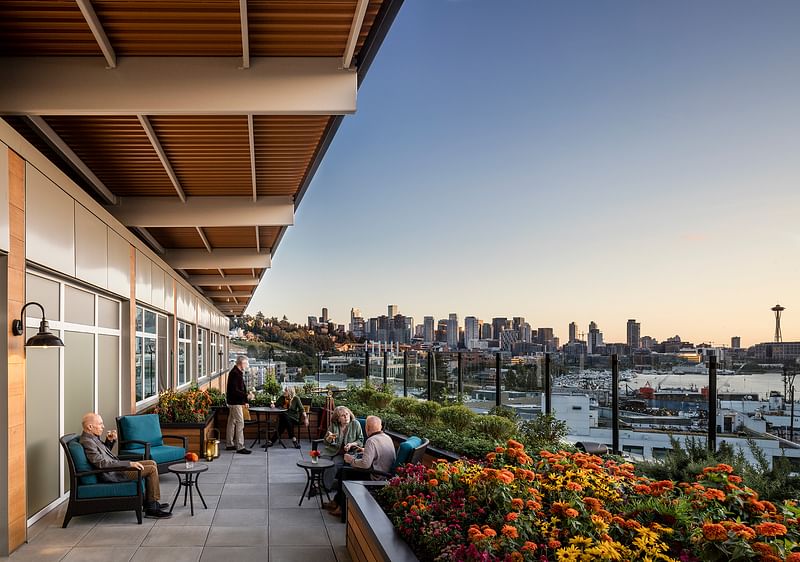
ULI description: "Aegis Living focuses on providing new senior living communities near where seniors are already living so that the transition to a care community does not disconnect them from friends, family, and community life. Located in Seattle’s Eastlake neighborhood, easily accessible from I-5, the Eastlake site had challenging topography and limited FAR. [...] Aegis created the first assisted living community built to meet the rigorous global green building standards for the Living Building Challenge Petal Certification through the International Living Future Institute (ILFI). The community is also participating in the City of Seattle’s Living Building Pilot Program. As the first senior living community built to pursue these rigorous green standards, Aegis created its own baseline metrics for improving energy use."

RELATED NEWS Urban Land Institute recognizes 10 North American projects as ULI Americas Awards for Excellence winners

RELATED NEWS Harvard University team wins the 2023 ULI Gerald Hines Student Competition with their redevelopment scheme for Charleston


Share
0 Comments
Comment as :